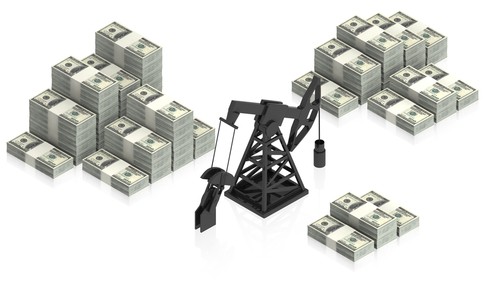 Much has been said about the recent strength of the U.S. Dollar due to the Federal Reserve Bank of the United States raising short term rates and making holding dollars more attractive. Initially, the Fed infered they would raise rates four times this year. This now seems unlikely as the first couple months of 2016 have been brutal across all financial markets. Slowdown fears in China and concern about European bank exposure to energy companies have contributed to market stress in addition to the fear of rates rising.
Much has been said about the recent strength of the U.S. Dollar due to the Federal Reserve Bank of the United States raising short term rates and making holding dollars more attractive. Initially, the Fed infered they would raise rates four times this year. This now seems unlikely as the first couple months of 2016 have been brutal across all financial markets. Slowdown fears in China and concern about European bank exposure to energy companies have contributed to market stress in addition to the fear of rates rising.
With the specter of significantly higher U.S. interest rates somewhat off the table, dollar demand due to higher rates is less of a possibility as well. NASDAQ reports, For the U.S., the main focus will be the FOMC minutes and unfortunately we don’t expect the report to help dollar bulls. If you recall, the Federal Reserve made a number of changes to the last monetary policy statement and each adjustment pointed to a less hawkish central bank that could very well leave interest rates unchanged in March if oil prices and global equities fail to recover. They described growth as slowing late last year, pointed to weakness in inflation and warned that they are closely monitoring global economic and financial market developments. The market is bearish dollars and dovish FOMC minutes would give investors another excuse to sell the currency.
Although rate considerations of course play into currency valuations, I think the dollar’s strength is much more attributed to its inverse relationship to commodity prices. The relationship has been true at least over the last few decades. There are various theories as to the cause of the correlation but its existence really can’t be refuted. Even though many countries are attempting to ex-out the dollar from the trade in crude oil, the effect of these efforts is so far muted on the inverse relationship of the dollar and oil prices.
Crude oil has been driven down by an excess of supply and an weak global economy that has reduced the increase in demand for energy. This situation is not going away soon; however, there is only so low that oil prices can go. We of course could see the price of crude drop down to a teens handle. However, that’s only $15 a barrel from here, down from over $100. In other words, we are much closer to the bottom in oil prices than the top. If oil prices don’t have that much more room to drop, then the dollar may not have much more room to rise in valuation.
When the price of oil bottoms and starts to rise (I don’t think we are there yet in spite of the short squeeze oil rally last Friday), the price of the dollar will fall against major currencies due to the unwind of the collapse of crude. This input into the currency’s valuation will be much stronger than the input from a dovish Fed.
There is a saying that interest rates only go from 20% to zero once in a lifetime. I would hazard to say that people will only see the price of oil in the $20s a few times in their lifetime. Too many governments rely of the sale of crude for their hold on power to allow crude to languish at these levels for very long. The motivation to see the price of oil back to around $50 where these governments can survive is just too great.
When the price of oil starts to go back up, the value of the U.S. Dollar will start to come back down.
L. Todd Wood is a former emerging market debt trader with 18 years of Wall Street and international experience. He is also an author of historical fiction thriller novels. His first of several books, Currency, deals with the consequences of overwhelming sovereign debt. He is a contributor to many media outlets and is a foreign correspondent for Newsmax TV. LToddWood.com





